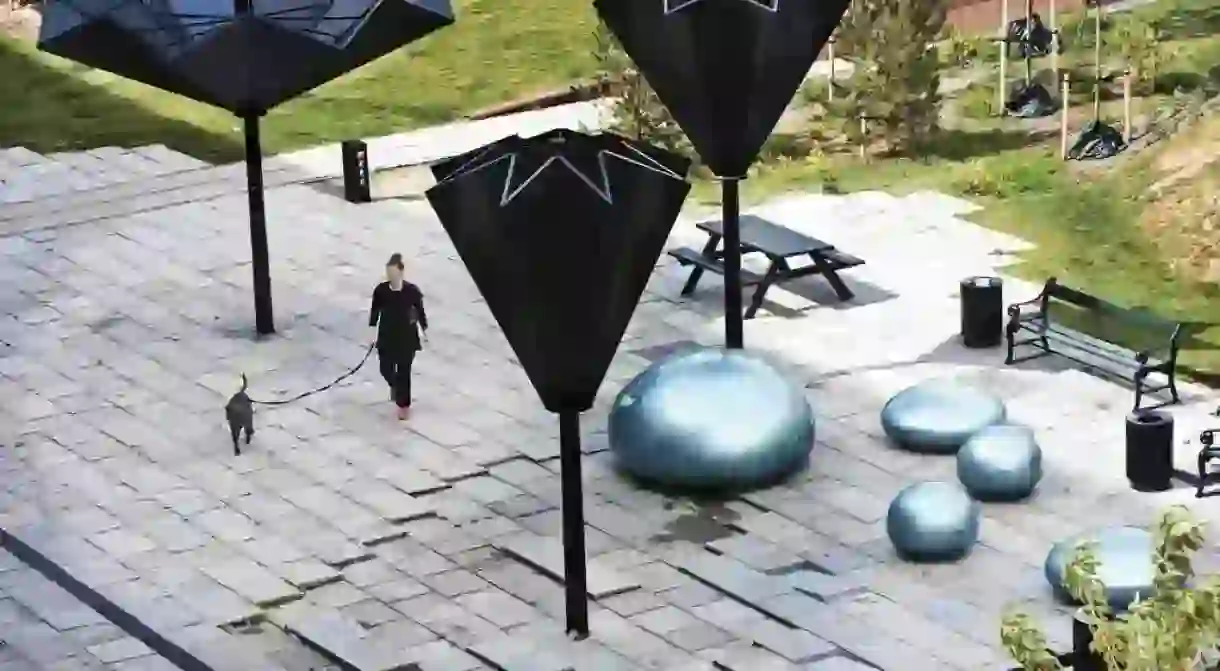Why Copenhagen's Pretty Parks Will Transform Into Ponds

Copenhagen has found an innovative and environmentally beneficial way to deal with climate change: urban nature spaces that will be designed to collect, percolate an reuse rainwater.
As in every country, environmental issues have a major effect on climate and weather. In Denmark that includes heavy rainfall that can be followed by long periods of drought. As a result, Copenhagen’s municipality, urban architectures and inhabitants have joined forces to create the first climate change-adapted urban space in the city: Tåsinge Plads, in the warm, family-style neighborhood of Østerbro.

Tåsinge Plads may look like an ordinary park, but each one of its features is made in such a way so as to collect and percolate every single drop of rain. The water parasols in the middle of the square have been placed so as to collect the water, while storage tanks have been placed underground. The bouncy floors on top of these tanks create a clever drainage system based on children’s natural impulse to jump on them – meaning that every time a child bounces on one, the water is drained into the pipes below. Wild plants and small gardens have replaced the pavements and have been placed at a lower level of the park in order to collect the rainwater.
Having faced two floods in the recent past, these new urban areas are designed and constructed to help avoid flooding in the future. Already their first project at Tåsinge Plads contributes to the city’s bigger plan, as it is constructed to drip rainwater collected from a surrounding area of 4300 square miles (11,137 square kilometres).

It seems that Tåsinge Plads was only the beginning, as the council has already approved plans for 300 surface-based solutions that will be completed over the next 20 years. Residents already look forward to seeing Skt. Kjelds Plads transformation into an urban space based on green and blue solutions, whose construction is estimated to finish by the end of 2018. This urban nature space will be redirecting 30% of the collected rainwater to green area surfaces, while cloudburst roads and pipes will be used to transfer the surplus water to the harbour.














